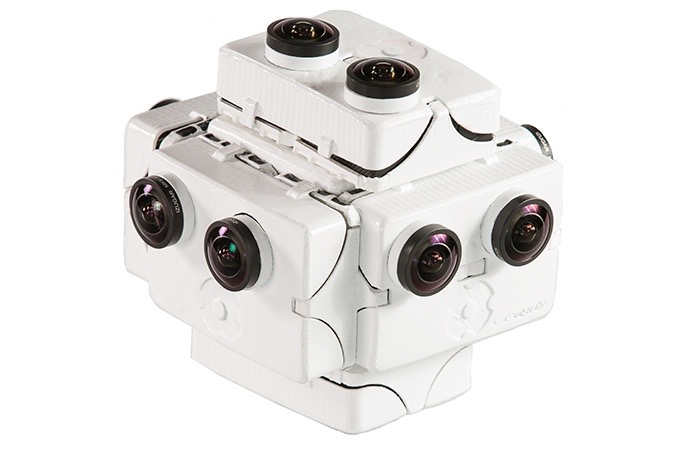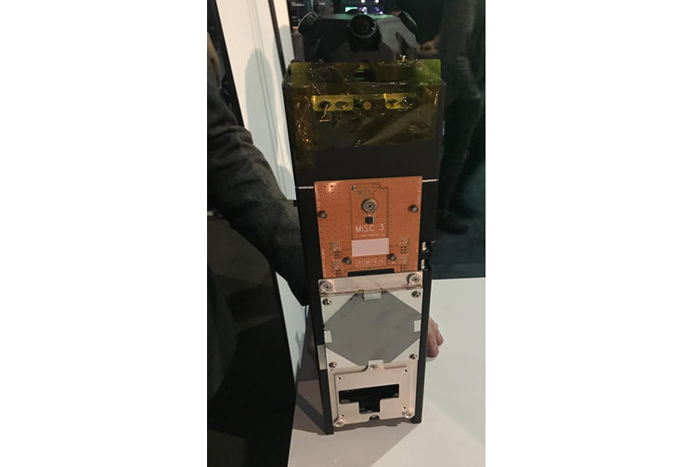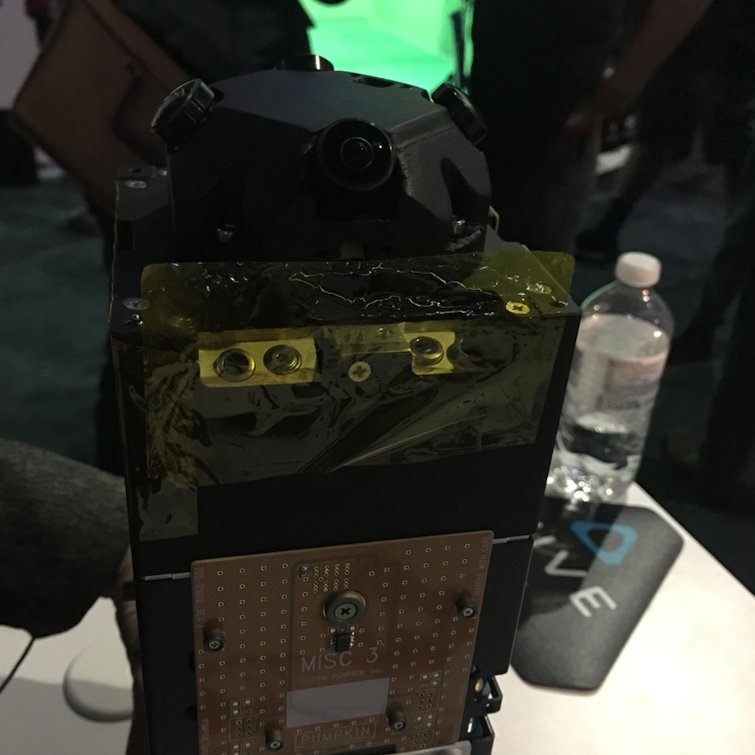SpaceVR's Satellite Gets Added Funding Boost From HTC

HTC announced during VRLA last Friday that San Francisco-based SpaceVR is the first recipient of its VR For Impact program, giving the fledgling (but already successful) startup an even bigger financial boost as it nears the date when it will launch the first VR satellite into space.
SpaceVR’s CEO, Ryan Holmes, was on stage at the annual VR conference, and then at HTC’s exhibit showing off the actual satellite, which is called the Overview 1. The satellite will embark into space in the latter half of 2017 on a SpaceX mission, according to Holmes. The company had originally planned the launch for the SpaceX CRS-12 mission in June, but that has been rescheduled for August.
Overview 1 will first go to the International Space Station via SpaceX and will then be deployed into low earth orbit via the NanoRacks CubeSat Deployer, according to SpaceVR. There, it will orbit the earth for nine months, capturing footage that will supply a raft of VR content. Holmes told Tom's Hardware that the communications capabilities of Overview 1 won’t allow a live feed at this point, so the content will come from a compilation of footage the satellite collects, particularly around earth-based events like severe weather.

Overview 1 consists of eight different Sony-made 4K camera sensors. Four sit at the top of satellite, and four at the bottom. Holmes didn’t have the exact sensor model, but he said the cameras are capable of capturing about 300 meters per pixel, so these will show only larger entities and events. Your backyard barbecue foibles will not be captured via satellite for worldwide VR viewing just yet.
The satellite uses a star tracker (pictured underneath the cellophane in the image below) to understand its position relative to the stars and the earth, and then it spins three gyroscopes to turn and stabilize the satellite in space. Like most low earth orbit satellites, the Overview 1 will circle the earth every 90 minutes. Overview 1 will be deployed for nine months, at which point it will burn up.
Holmes told us that Overview 1 took about a year and a half, from idea to build, and that it was built at a cost of $1 million. The company has been funded through a series of angel investors, a Kickstarter campaign, and a round of funding last April. HTC did not reveal the amount VR For Impact awarded SpaceVR. The company also plans to charge for its content, at $35 for a one-year subscription. The company’s web site reveals plans to deliver more satellites, including into the solar system.

Holmes said he believes that the future of space is robotics, given that it currently costs an estimated $1 billion to train and send a single astronaut into space. He said that launching robots to operate in space makes more financial sense, and that we would be able to control what those robots do through VR.
Breaking space news, the latest updates on rocket launches, skywatching events and more!
The VR For Impact program, announced earlier this year at the World Economic Forum in Davos, is intended to support the United Nations’ sustainability program. Rikard Steiber, head virtual reality for HTC, said during his VRLA talk last Friday that virtual reality can and should play a positive role in solving global problems. The company will announce a few more funding recipients next weekend during Earth Day (April 22).
Originally published on Tom's Hardware.
Join our Space Forums to keep talking space on the latest missions, night sky and more! And if you have a news tip, correction or comment, let us know at: community@space.com.
